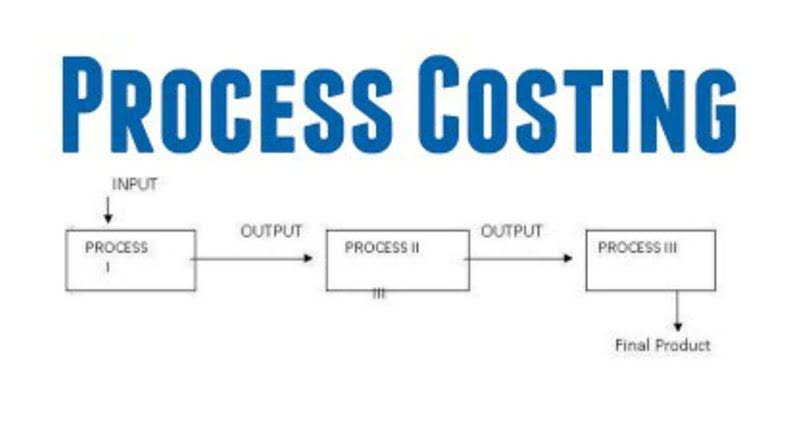Content

Retained earnings are much like a savings account, which is usually reserved for emergencies or large purchases. However, from a more cynical view, the growth in retained earnings could be interpreted as management struggling to find profitable investments and project opportunities worth pursuing. As a broad generalization, if the retained earnings balance is gradually accumulating in size, this demonstrates a track record of profitability . But while the first scenario is a cause for concern, a negative balance could also result from an aggressive dividend payout – e.g. dividend recapitalization in LBOs. In effect, the equation calculates the cumulative earnings of the company post-adjustments for the distribution of any dividends to shareholders. On the balance sheet, the relevant line item is recorded within the shareholders’ equity section. For one, retained earnings calculations can yield a skewed perspective when done quarterly.

However, those investors who are against the decisions, are given freedom to challenge it through the majority vote. However, there are different reasons why both the management and shareholders may allow the company to retain the earnings. Since the management is in a better position to understand the market and the company’s business, they may have a high growth projection insight. This is a good thing for those investors who are looking forward to more higher returns. Also, both the shareholders and management may decide to pay off the high-interest debt instead of rewarding investors with dividends. Generally, to be able to reach a win-win situation, company management often go for a balanced approach.
Are there any disadvantages of retained earnings calculations?
Retained earnings are the portion of a company’s profits that have been retained by the company. In other words, retained earnings are the amount of income after expenses that has not been given out to stockholders in the form of dividends. Retained earnings are a type of equity and thus can be found in the owner’s or shareholder’s equity section of a company’s balance sheet.

If the company suffered a loss last year, then its beginning period RE will start with a negative. For the year, Company A reported a net income of $5000 and paid $3000 as Dividends. It is important to note that retained earnings can be reduced by all three of these components if net income for the period is negative. Retained earnings, revenue and profit are how to calculate retained earnings important aspects of determining a company’s overall financial health; however, they are used to evaluate different components of a business’s finances. If a company isn’t retaining earnings or paying a dividend, it’s unlikely to win any investors. The retained earnings amount can also be used for share repurchase to improve the value of your company stock.
How to interpret the results of retained earnings calculations
The dividend payout ratio is the measure of dividends paid out to shareholders relative to the company’s net income. A cash dividend is a distribution paid to stockholders as part of the corporation’s current earnings or accumulated profits in the form of cash.

You will be left with the amount of retained earnings that you post to the retained earnings account on your new 2018 balance sheet. If the only two items in your stockholder equity are common stock and retained earnings, take the total stockholder equity and subtract the common stock line item figure. Profits give a lot of room to the business owner or the company management to use the surplus money earned.
The Impact of Negative Retained Earnings
Your financial statements may also include a statement of retained earnings. This financial statement details how your retained earnings account has changed over the accounting period, which may be a month, a quarter, or a year. Retained earnings aren’t the same as cash or your business bank account balance. Your cash balance rises and falls based on your cash inflows and outflows—the revenues you collect and the expenses you pay. But retained earnings are only impacted by your company’s net income or loss and distributions paid out to shareholders.
Is retained earnings an income?
Revenue is the income earned from the sale of goods or services a company produces. Retained earnings are the amount of net income retained by a company. Both revenue and retained earnings can be important in evaluating a company's financial management.
Another option is to pay out your retained earnings as dividends to investors or shareholders of your company. Investors will look at how you are using retained earnings in your business, and they will want an increased profit and possibly a payoff, either in dividends or an increasing share price. Since paying retained earnings as dividends can limit how much a company can grow, deciding whether or not to pay dividends or invest in the company’s growth can be a difficult balance.
Step 3: Add Net Income From the Income Statement
Management will regularly review retained earnings and make a decision based on the goals and objectives they have established. As a business owner, you have many options for paying yourself, but each comes with tax implications. Are you a new small business owner looking to understand your tax return a little more? Here are the definitions of various types of income and how they related to your small business’s taxes. You may have noticed that independent contractor payments are now reported on the tax form 1099-NEC rather than the 1099-MISC. Here’s everything you need to know about this new informational IRS form. This is to say that the total market value of the company should not change.
- In the long run, such initiatives may lead to better returns for the company shareholders instead of those gained from dividend payouts.
- The money can be used for any possible merger, acquisition, or partnership that leads to improved business prospects.
- Pro-Forma EarningsPro-Forma Earnings are the company’s income determined in deviation from compliance with the Generally Accepted Accounting Principle.
- This means that the company will issue 500 shares as the stock dividend to shareholders.
- Various factors that affect net income are – revenue or sales, Cost of Goods Sold , Operating expenses, Depreciation, and more.
- Datarails is an enhanced data management tool that can help your team create and monitor cash flow against budgets faster and more accurately than ever before.
Dividends declared must be subtracted from retained earnings, not added. Thus, XYZ Corporation’s retained earnings at the end of the year are $510,000. This is a significantly higher amount than the company’s retained earnings at the beginning of the year, which were $250,000. It can be helpful to work through a few examples of https://www.bookstime.com/ in order to develop a full understanding of the concept. Similar to the second input is current year profit or loss, which may be positive or negative depending upon how the company performed. In this post we will cover retained earnings, how it is calculated, how it is used by management and some of its limitations. Suppose Jargriti Pvt Ltd wants to calculate the Retained earnings for this financial year end.
What Is Current Ratio and How to Calculate It
Negative profit means that the company has amassed a deficit and owes more money in debt than what the business has earned. Retained earnings is the portion of a company’s net income which is kept by the company instead of being paid out as dividends to equity holders.
- Retained Earnings is a term used to describe the historical profits of a business that have not been paid out in dividends.
- She has worked in multiple cities covering breaking news, politics, education, and more.
- Usually, this means using retained earnings to improve efficiency and/or expand the business.
- As stated earlier, dividends are paid out of retained earnings of the company.
- Bench gives you a dedicated bookkeeper supported by a team of knowledgeable small business experts.
- Retained earnings are calculated by taking the beginning retained earnings of a company for a specific account period, adding in net income, and subtracting dividends for that same time period.
A company’s retained earnings depict its profit once all dividends and other obligations have been met. If the retained earnings of a company are positive, this means that the company is profitable. If the business has negative retained earnings, this means that it has accumulated more debt than what it has made in earnings. In fact, both management and the investors would want to retain earnings if they are aware that the company has profitable investment opportunities. And, retaining profits would result in higher returns as compared to dividend payouts.
Products
The right financial statement to use will always depend on the decision you’re facing and the type of information you need in order to make that decision. Retained earnings are what you started with at the beginning of the year plus or minus the net income or loss you made for the year. Then, mark the next line, with the words ‘Retained Earnings Statement’.
Comments by Леонид Романов